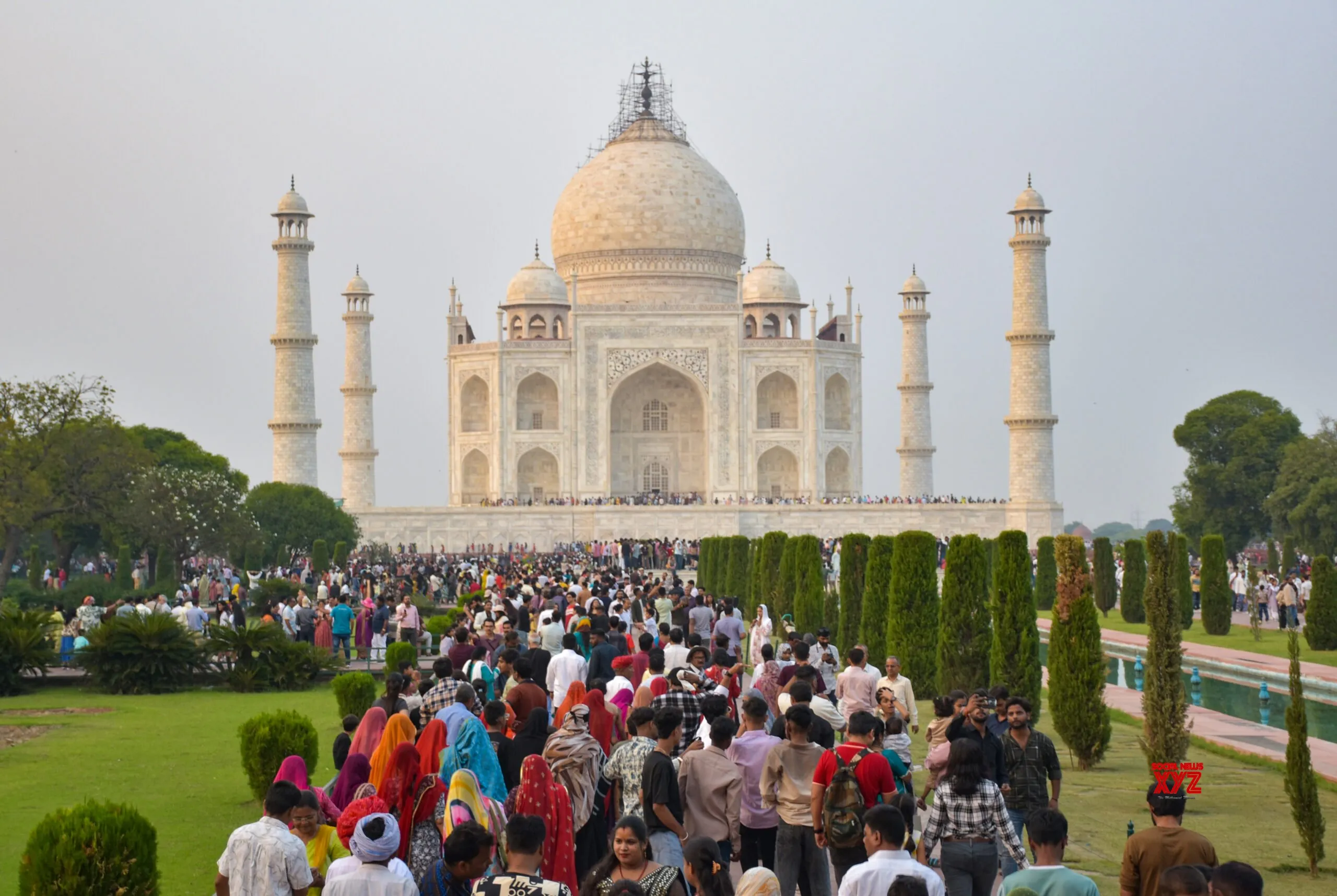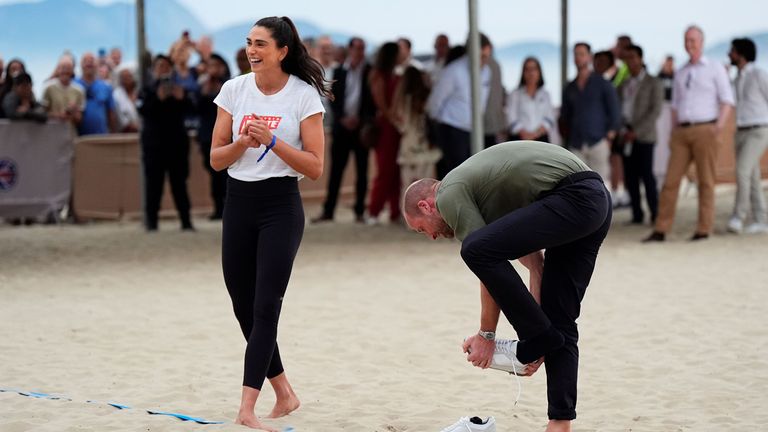Copyright GamesRadar+

The first time I spy question marks during a conversation in The Outer Worlds 2, my curiosity gets the better of me. Hovering over them tells me I'm missing some required information, which locks me out of a possible dialogue response that could open up a different path. This happens in the opening of the RPG, when I'm trying to sway a poor cadet caught up in the ruckus on Horizon Point. Since I previously lied to him, he's reluctant to help me out by lowering a bridge so I can progress, and when my Speech skill fails to persuade him otherwise, I'm left with two alternatives: either I pick the lock to his office and do it myself (likely killing him in the process), or I search for the answer to those intriguing question marks. Just knowing that somewhere out there is an opportunity waiting to be seized proves to be too enticing to ignore, so with nothing else for it, I back out of the conversation and search the immediate area. It's not long before my efforts prove fruitful, and I find a document about the cadet that not only allows me to convince him, but it even kicks off a new side quest that I wouldn't have gotten otherwise. It may be the first instance this happens, but it's certainly not the last, and I love how rewarding exploration often feels as a result – you never know what you'll find, but it instills in you the idea that your presence in the world, and the actions you've chosen to take, matter. Of course, there will also be times when you will miss out on things either because of the Skills or Background you've picked, or because of the discoveries you've overlooked. But the choices you can and can't make directly reflect the way you've decided to play. And as design director Matt Singh explains, this was intentionally done partly "to make sure that your build truly mattered", and to do that, they needed to make it so that "you can't solve this problem in the way that everybody else can, but we open up other opportunities for you". Decisions and discoveries Right from the very beginning of The Outer Worlds 2, you'll be shown some of the ways you could have engaged with the environment or taken a different approach if you had picked other skills or backgrounds. The way you see alternative routes in both the world and in conversation constantly had me imagining future playthroughs, and even from speaking with my colleagues here at GamesRadar+, we've had noticeably different experiences in certain scenarios based on our character builds and the decisions we've made. After chatting with Obsidian, it's clear that not being able to do certain things in some cases is all a part of the team's approach to reactivity. "We try to not be precious about the idea that, like, 'hey, everybody is going to have a different experience, and they may not see everything, and that's okay'," Singh says. "We need to be okay with there being optional content or things that are going to get cut off from the player because of the choices they've made. We want this reactivity to be really felt, and we want it to feel like it follows from the actions the player took." Game director Brandon Alder tells me that there was initially a debate internally about how much to surface and show the player in terms of what other choices you could have made, or how you could have done differently in any given situation: "But you'll notice, we kind of go out of our way to let players know, like there were other options for you. We hide maybe exactly how those things were supposed to play out, either through question marks, or it's grayed out, or again you're just not quite sure, but you do see those things all over the place." Pointing to options connected to player builds, as well as dialogue that's greyed out or replaced with question marks, Adler adds that "all of those things were extremely intentional, because we want the player to understand the breadth of what the game is, but also their place in that and where they could be going if they wanted to actually modify their character and put points in that place as well". At one point in development, the team were also thinking about how far they should take this level of reactivity and choice. Adler explains that they even "backed out of some of this in the game". "We were even pushing for things harder than that in terms of locking either quests or areas out for people that did not have certain skills," Adler says. "And ultimately, we ended up walking those back and ended up just getting more options for players in those quests where we're like, okay, instead of completely gating this thing, if you don't have Medical [for example], we're going to let you do it anyway. And you can potentially solve it, maybe in a non-optimal way. But if you have Medical, you can actually go above and beyond where you'll get more out of that. So we use that as a tool for a lot of those things." A journey of your own making By showing other choices that could be open to you were you to explore more, or change up your build in future playthroughs, speaks to Obsidian's aim to make The Outer Worlds 2 as reactive as possible, and ultimately give your decisions some meaningful weight. "We absolutely wanted to go out there and say, 'hey, when players are interacting with the story, their various actions are changing things that are going on in the world. We want that to have long term effects in things that are going on'," Adler says. "We wanted reactivity for the regions themselves, where somebody does something to a region that has an effect on things that are happening in that area. And of course, we wanted - this is probably where we see most of the reactivity - I'm doing things inside the world. I have my character build, I'm using that to do various things. And I'm getting kind of an immediate hit of like, 'oh man, the game is reacting in a special way to something I just did'." Throughout my time with the RPG, I've experienced lots of ways in which the adventure has directly responded to what I'm choosing to do. Whether it be offering me up flaws based on my actions, discovering a new avenue in a questline thanks to my exploration efforts, or seeing how my build has closed off or opened up areas or paths. All of it makes me feel like my presence as the Earth Directorate agent actually has an impact, and my agency as the player is being recognized in some way. Ultimately, as creative director Leonard Boyarsky says, "from beginning to end" Obsidian "really want to surprise the player when it comes to reactive stuff". "And that's a really tricky part to get right, because you want to surprise players, but you don't want them to be like, 'Oh, I never saw that coming in a bad way in terms of like, I thought I was making the right choice, and it turned out horribly," Boyarsky says."You know, the best twist that comes out of nowhere is one where the players are saying, 'I should have seen that coming. I missed that'. And it's not always easy to do but we've put a lot of time and effort into getting those little things in there. And again, you know, we're really adamant about, if players miss these things [it's okay]." "It's very hard for designers to be like, 'we're going to let players miss some of this stuff. We're not going to force them to find it. And it's on the players to find it'. And it gets tough sometimes when you're watching people stream or whatever, and they miss things and you're just screaming at the screen," Boyarsky laughs. "But I think it adds to the experience. It adds to the replayability, definitely."



